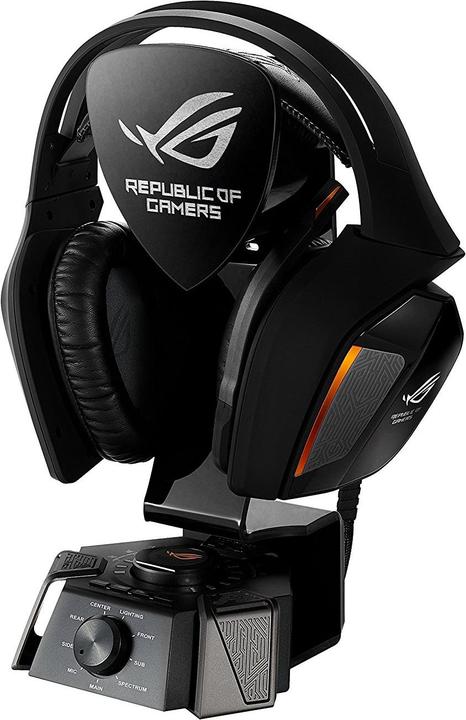

How does Virtual Surround work and is it worse than True Surround?
Real surround sound requires at least five speakers. Virtual surround headphones do the whole thing with two. How does it actually work? How do we cheat our ears and can you even hear the difference?
I needed two years. Two years until I realised that my Astro A50 headset doesn't produce real surround sound at all, but only virtual sound. "Rubbish", said my mate when I told him about it. He owns the same model. Deep down in the specifications, it's written in black and white: virtual surround. I was flabbergasted. Although I didn't use the device regularly, I never even suspected that it couldn't deliver real surround sound.
Since then, my prejudice against virtual surround sound has eased noticeably. But now I want to know how it actually works and whether you really can't tell the difference. Let's start with a brief overview of the different systems.
Stereo
Stereo sound works very simply. You have two speakers. To recognise the direction from which a sound is coming, the level and delay are adjusted. If there is a bang from the left, the left ear will receive louder sound than the right.
Virtual Surround

Virtual Surround basically uses the same technology as Stereo Sound, but goes one step further. There are still only two diaphragms installed. This is easily recognisable when only one driver is listed in the product description (e.g. 50mm). In addition to different levels, there are also small delays at the opposite ear. This makes the brain think that the sound is coming from more than two directions. Manufacturers still rely on numerous different techniques to simulate surround sound.
Real surround

Real surround headphones have several separate drivers in each ear cup. For space reasons, they are usually smaller than stereo headphones. Instead of a full 50mm driver, there are several small ones between 20mm and 40mm. A 5.1 headset therefore consists of ten drivers. This is intended to better simulate the sound from different directions.
And which is better?

Ten drivers that fill one ear sound better than two at first. Kurt Heutschi, acoustics expert at EMPA in Dübendorf, explains why this is a fallacy. "The only information we listeners have is the movement of the eardrum to the left and right. Localisation of sound comes from the time of flight and differences in intensity. If I look forwards and the sound source is on the right, the sound reaches my right ear faster. It is geographically closer to the source and also registers the sound more directly. The left ear is shielded by the head, which leads to an attenuation." So if a sound is delayed in time and the amplitude emits a different signal, a directional perception is created. This allows a sound from any direction to be simulated.
Scientifically, it is therefore incomprehensible why several drivers per headphone side should be useful. "Multiple sources make no difference to the ear. The eardrum only experiences a superimposition of the speakers. And the other ear doesn't even hear the noise from the other headphone shell," explains Heutschi. The idea stems from loudspeaker construction. It is not possible to cover the entire frequency range with a single driver. That's why a good loudspeaker consists of a woofer, midrange driver and tweeter. "There are physical limits with loudspeakers, but there are no such problems with headphones. You're honking directly into the eardrum, so to speak," says Heutschi. He therefore sees no advantage to real surround headphones. Manufacturers also seem to share this view when comparing the range of true surround and virtual surround headphones on sale.
The case is clear for headphones
The clear statement from Kurt Heutschi didn't come as a complete surprise to me. I have often heard doubts about the sense of real surround headphones. While loudspeakers are physically limited purely by their distance from the ear, headphones can deliver sound directly to the ear - the ideal prerequisite for good virtual surround sound. Now I feel much better with my Astro A50s. And all the stylish models with Virtual Surround that I had previously spurned have suddenly become really attractive. Nevertheless, I'd like to put Virtual Surround to the test against True Surround. Stay tuned.
How do you see it? Do you use Virtual Surround Sound? Do you have true surround sound headphones? Or do you prefer good old stereo sound?
A selection of virtual surround headphones
If you're still convinced of true surround
Being the game and gadget geek that I am, working at digitec and Galaxus makes me feel like a kid in a candy shop – but it does take its toll on my wallet. I enjoy tinkering with my PC in Tim Taylor fashion and talking about games on my podcast http://www.onemorelevel.ch. To satisfy my need for speed, I get on my full suspension mountain bike and set out to find some nice trails. My thirst for culture is quenched by deep conversations over a couple of cold ones at the mostly frustrating games of FC Winterthur.




